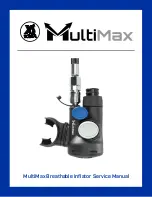
36
TIPS - QUESTIONS - ANSWERS
The probe must be inserted into clean
plants to prevent “cross contamination”.
This must be insured in the food and
pharmaceuticals industry.
Never insert the probe in the sewerage!
Autoclaving is not possible.
The further you insert a probe, the big
-
ger the danger that it might get stuck. An
endoscopic probe can be more easily in
-
serted than extracted, as far as straight,
narrow and steeples pipelines are not
being inspected. In perimeters (e.g. hea
-
ting pipes at apparatus and reactors), this
can lead to self-obstruction. This is no
reason for concern. There are different
methods of disengaging the probe wit
-
hout opening the plant or destroying the
probe. The risk of getting stuck on is in
-
creased with the employment of centring
tools. Never use force while releasing! vi
-
Zaar® offers a foreign object search and
retrieval service.
Ensure proper mounting of your equip
-
ment to guarantee secure operation. The
probe will get damaged in case of a fal
-
ling base unit. By improper mounting or
working beyond your abilities, you are
seriously endangering people around and
underneath the device.
To achieve convincing inspection results,
the application ought to be cleaned in
advance as long as depositions do not
require documention. In case of unclean
plants, the optic / light out of the camera
becomes rapidly contaminated.
In order to limit the long-time action of
unknown substances, the probe ought to
be cleaned after usage.
The insertion point must be deburred;
sharp edges damage the braiding of the
insertion tube.
Ensure that the coating of the distal pro
-
be end is not visibly damaged and leaky
before operation.
Ensure that no elements in the applica
-
tion can be activated, e.g. remote control
valves, turbine rotors, agitators etc.






































